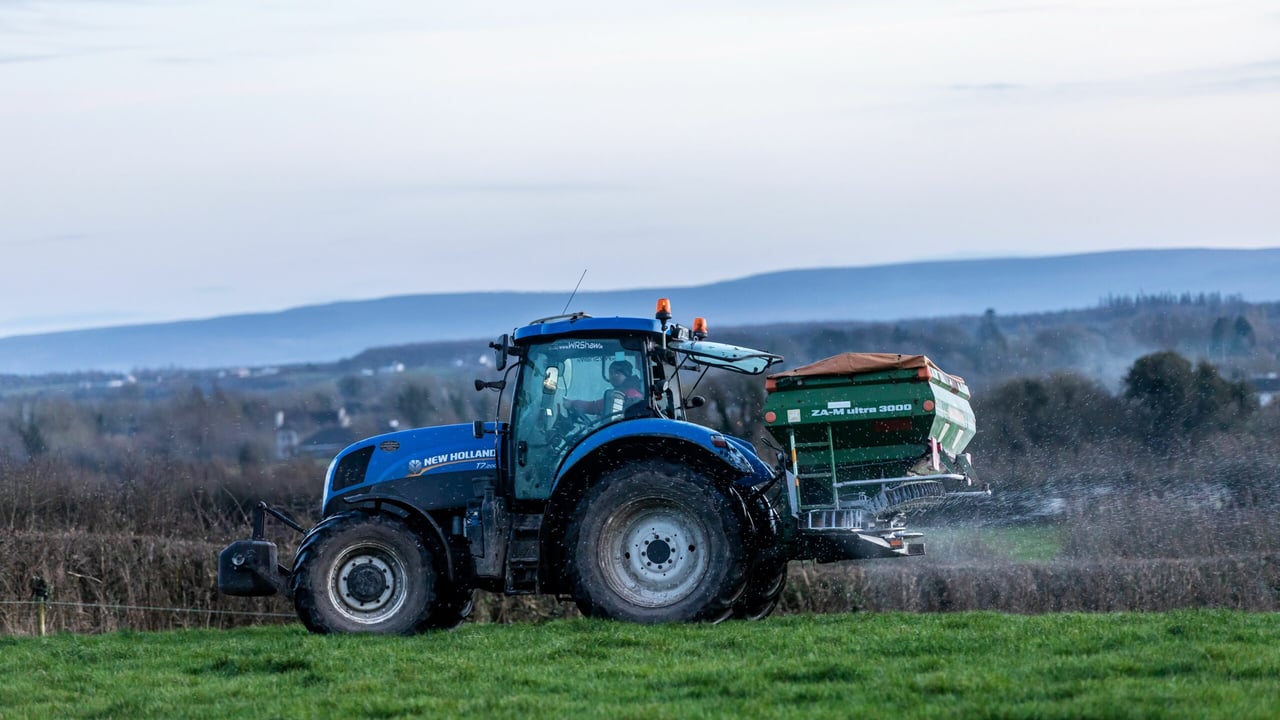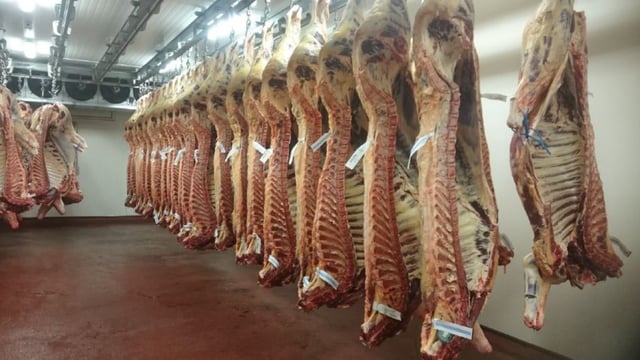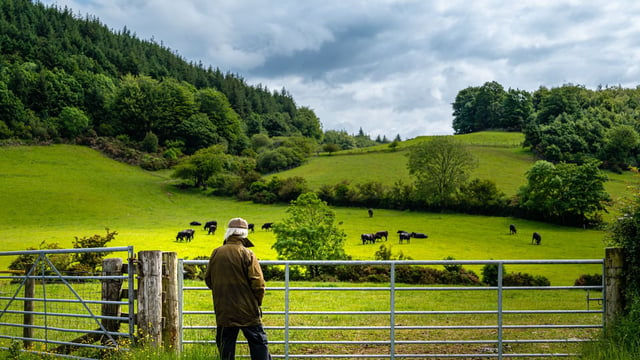How much nitrogen should you get out this spring?
Getting the timing right and getting the rate of application right for nitrogen (N) and slurry are key to growing grass in early spring.
As calving kicks off, and with the recent unsettled and wet weather, spreading early fertiliser might be the last thing on farmers' minds.
Zone A and Zone B are now permitted to spread chemical fertiliser with Zone C permitted to spread on February 15 which means that a plan must be put in place to ensure as much grass as possible is in the diet of your cows.
A lot of dairy farms will aim to get cows out in the early spring depending on weather and ground conditions, with many setting a target of having 30% of the farm grazed in February and the paddocks with the lightest cover should be chosen to do this.
Dry matter intakes (DMI) of cows will be low after calving and will slowly increase over time and the DMI of a cow will be in the region of about 13kg, including forage and concentrates.
Each week, the DMI of the cow will increase by around 0.8kg, until intakes reach a maximum 10 weeks post calving.
Research shows a large range in grass growth response to early spring N and while the appropriate application of early N is beneficial, the incorrect application of early N is wasteful and costly.
For early nitrogen to be worthwhile, it's best to spread when at a time when there has not been a period of heavy rainfall and when soil temperature is above 5.5℃ and rising.
Measure farm cover and use the grass growth predictions to inform decision making around slurry and N fertiliser application.
Farmers should target areas most likely to respond to early N application which are fields with a high perennial ryegrass content or recently reseeded.
Drier paddocks and fields with a grass cover of over 400kg DM/ha (6cm) and fields with optimum soil fertility (index 3 for P and K, pH over 6.2) are also suited for early N application.
Where farmers can, they should apply slurry to try and replace fertiliser N in the early spring by applying approximately 40% of the farm as soon as they can, targeting high demand areas where possible like silage ground and low P and K grazing ground.
In February, farmers should try and get out slurry to grazed areas (up to 30% of the farm) applying 2,000gals/ac which equates to around 25kg/ha of available N.
It is advised in the early spring to not apply any more than 2,500gals/ac in each application as it may only lead to nutrients being wasted.
As per Teagasc guidance, the nitrogen fertiliser and slurry application plan for the early spring period on well-drained soil is as follows:
| Fert/slurry split | Product | 40% of farm area | 15% of farm area | 15% of farm area | 30% of farm area |
|---|---|---|---|---|---|
| Jan/Feb | Cattle slurry | 2,000gals/ac | |||
| February | Protected urea | 20 units of N/ac (mid Feb) | 23 units of N/ac (early Feb) | 20 units of N/ac (early Feb) | 23 units of N/ac |
| February | Cattle slurry | 2,500gals/ac (mid Feb after grazing) | 2,500gals/ac (End- Feb after grazing) | ||
| March | Protected urea | 20 units of N/ac | 20 units of N/ac | 23 units of N/ac | 40 units of N/ac |
| Total N by April 1 | Slurry & fert N | 56 units of N/ac | 60 units of N/ac | 66 units of N/ac | 63 units of N/ac |
The above fertiliser spreading recommendations are for farms with well-drained soils who successfully get cows out in early spring.
For cattle slurry 2,000gals/ac equates to 16 units of N/ac or 20kg of N/ha. 2,500gals/ac equates to 20 units of N/ac or 25kg of N/ha.
To convert units of N/ac to kg of N/ha, simply multiply the units/ac by 1.23. e.g., 40 units of N/ac X 1.23 = 49.2kg of N/ha.
The Teagasc nitrogen fertiliser and slurry application plan for the early spring period on heavy soil, less intensive and/or later turnout farms is as follows:
| Fert/slurry split | Product | 1st 33% of farm area | 2nd 33% of farm area | 3rd 33% of farm area |
|---|---|---|---|---|
| Feb/March | Cattle slurry | 2,500gals/ac | 2,500gals/ac | |
| Feb/March | Protected urea | 23 units of N/ac | 46 units of N/ac | 23 units of N/ac |
| Total N by April 15 | Slurry & fert N | 43 units of N/ac | 46 units of N/ac | 43 units of N/ac |
A lot of farms in the country won't be able to get cows out in early February due to ground conditions and later growth rates and so, the above application advice allows for flexibility which is essential on heavier ground.
Soil temperatures have not been an issue in recent years, however, rainfall and sometimes the lack of rainfall has stopped people from spreading fertiliser.
If conditions do not suit, don't spread fertiliser just to meet the dates and stay on target, instead, use the above application rates and dates as a guideline this spring.





